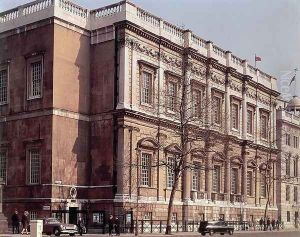Inigo Jones Paintings
Inigo Jones was a pivotal figure in the history of British architecture, credited with introducing the classical architecture of Rome and the Italian Renaissance to Britain. Born in July 1573 in London, England, Jones's early years are somewhat obscure, but it is known that he was the son of a cloth worker. His initial exposure to architectural design is believed to have come through the theatrical stage designs he created, which later influenced his architectural projects. Jones's transformative journey into architecture began with his travels to Italy, where he was profoundly influenced by the works of Italian architects, notably Andrea Palladio.
Jones's architectural philosophy was deeply rooted in the principles of classical antiquity, which he sought to adapt and implement within the context of British architecture. His appointment as the Surveyor of the King's Works in 1615 under King James I marked the beginning of his significant contributions to the architectural landscape of England. Among his most celebrated works is the Banqueting House at Whitehall, completed in 1622, which exemplifies his mastery of classical architecture and his innovative use of space and light. The Queen's House in Greenwich, London, is another notable project that showcases his pioneering use of Palladian principles in English architecture.
Throughout his career, Jones also made significant contributions to stage design, bringing a sense of architectural cohesion and perspective to the theatrical productions of his time. His designs for court masques, combining scenery, architecture, and stage machinery, were innovative and left a lasting impact on the development of theatrical production in England.
Jones's influence waned with the onset of the English Civil War and the changing tastes of the period, leading to a decline in his commissions. He died in June 1652 in London. Despite this, his legacy as the individual who introduced and established the classical language of architecture in Britain endures. Inigo Jones is remembered not only for his architectural achievements but also for laying the foundation for the future development of British architectural identity, bridging the gap between the medieval and modern architectural eras.







